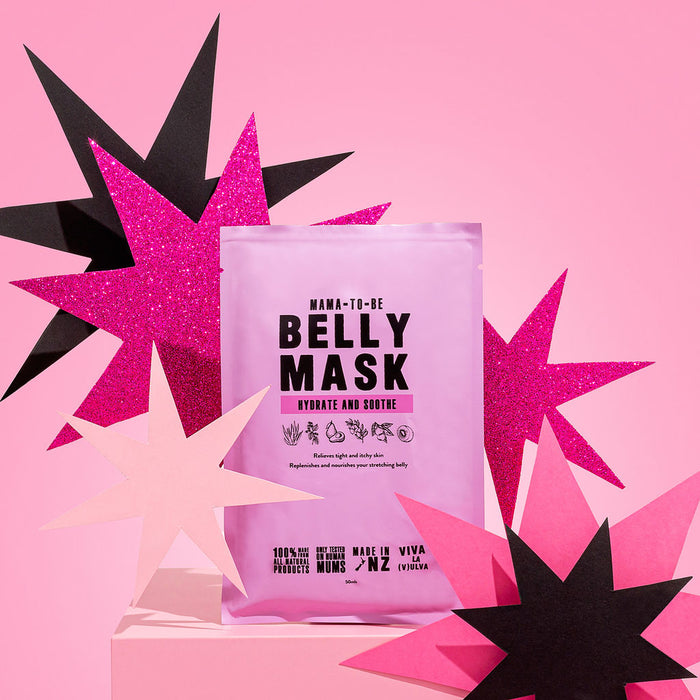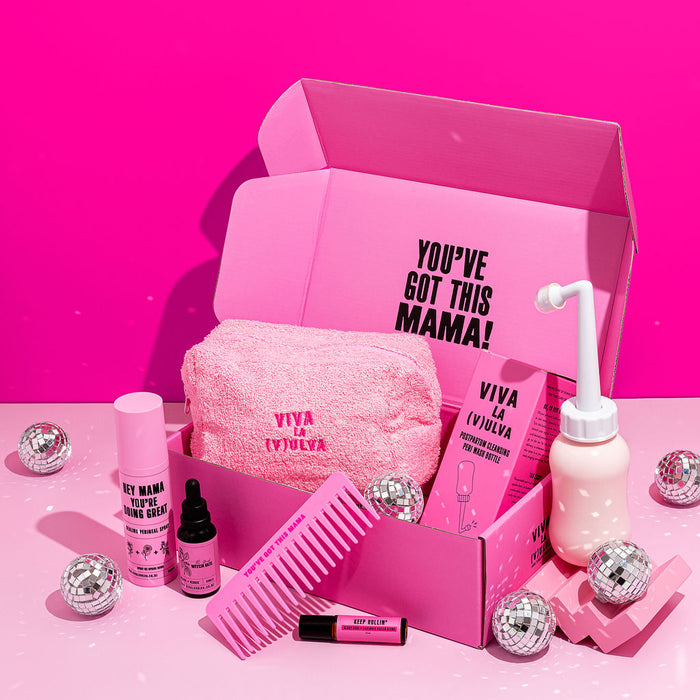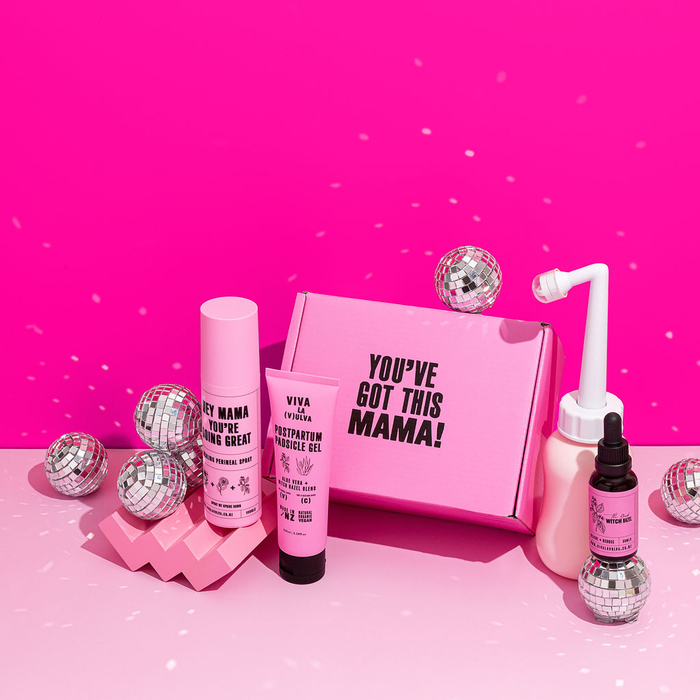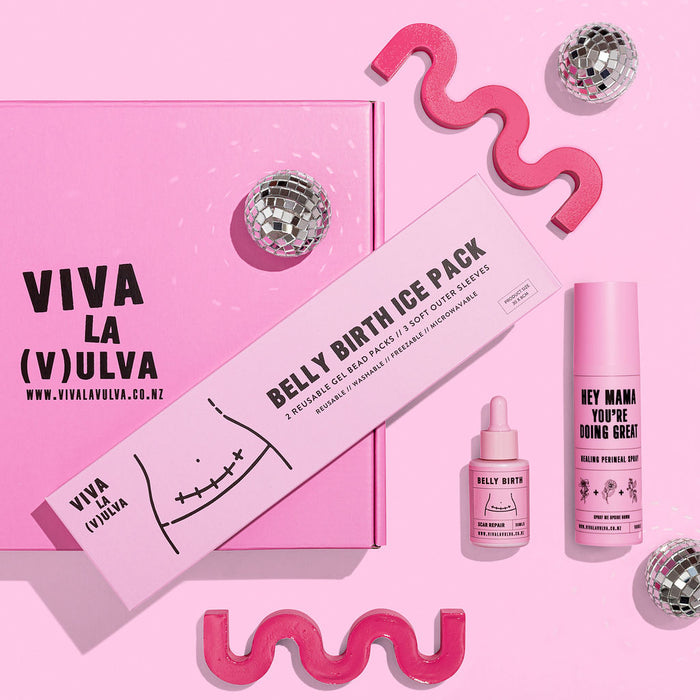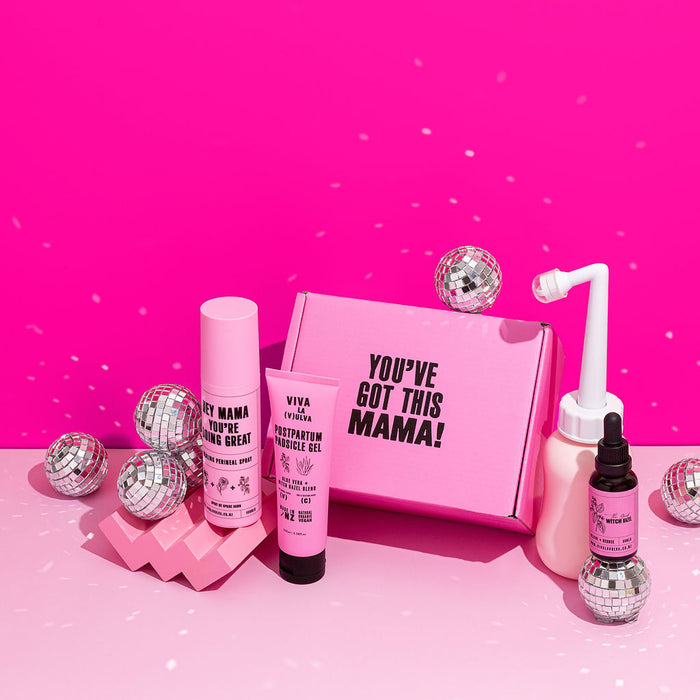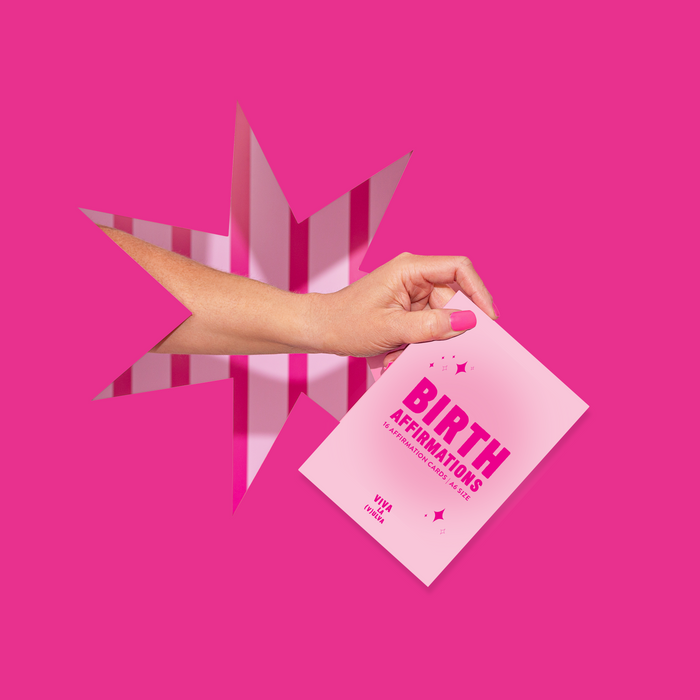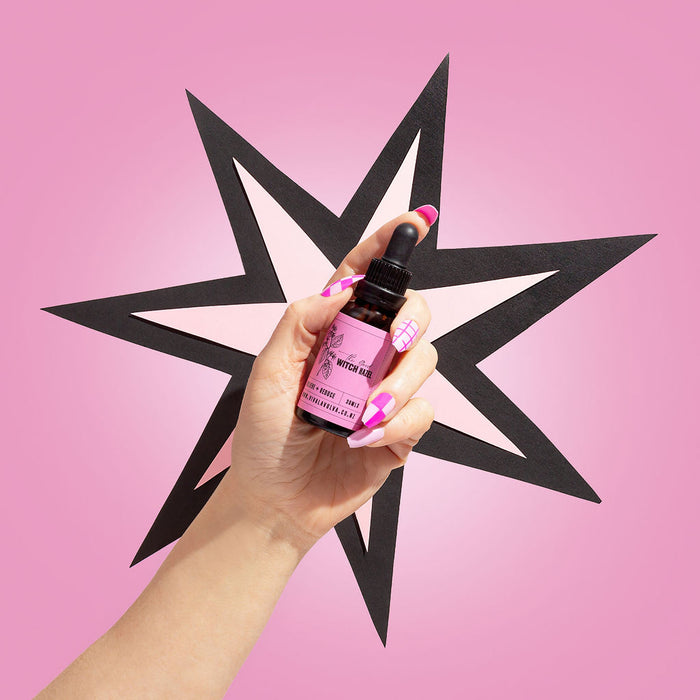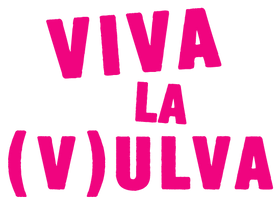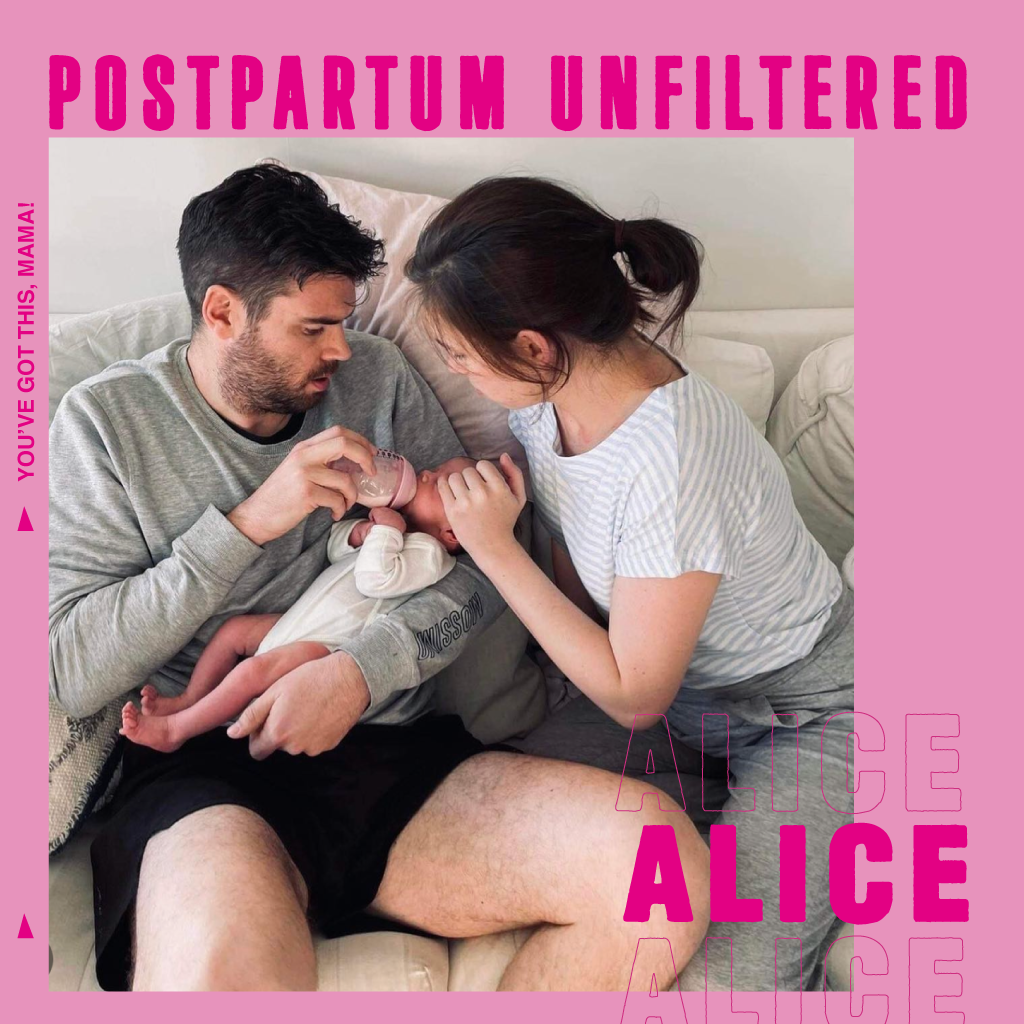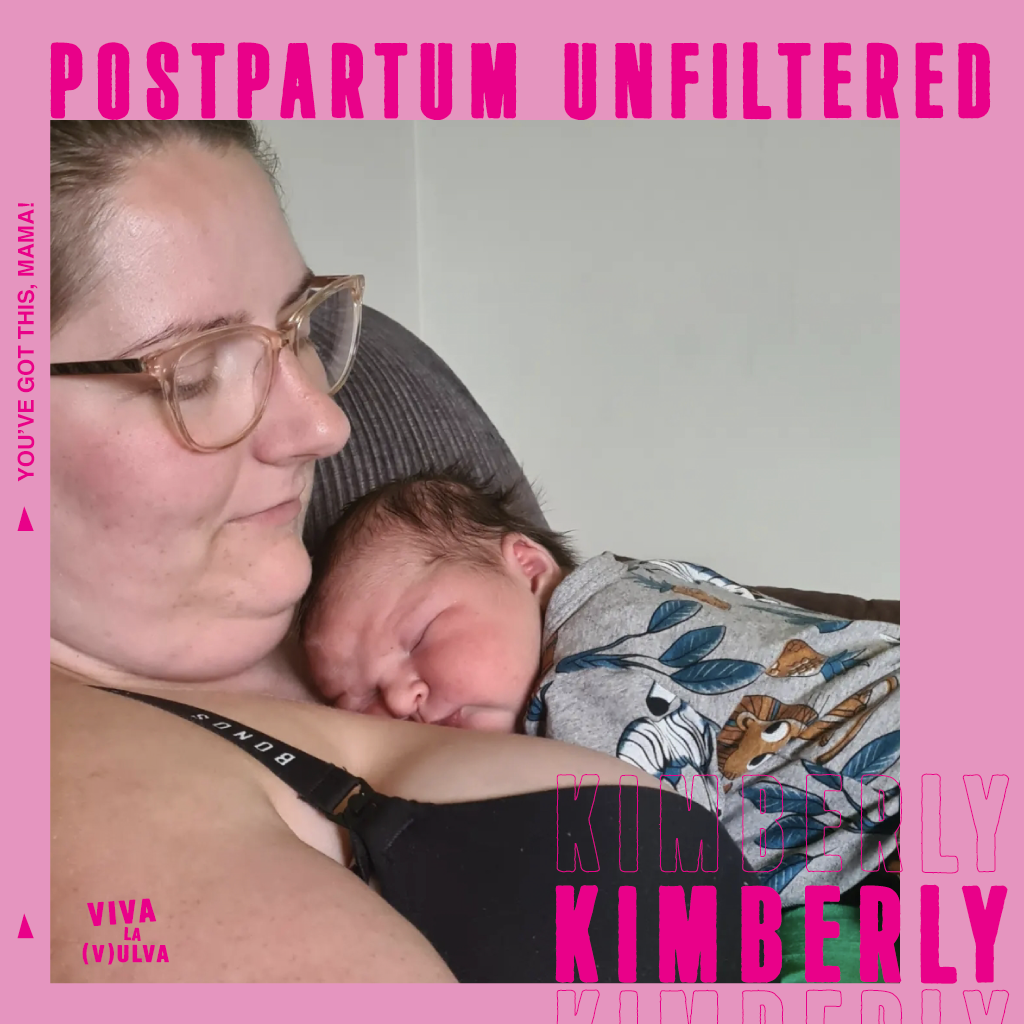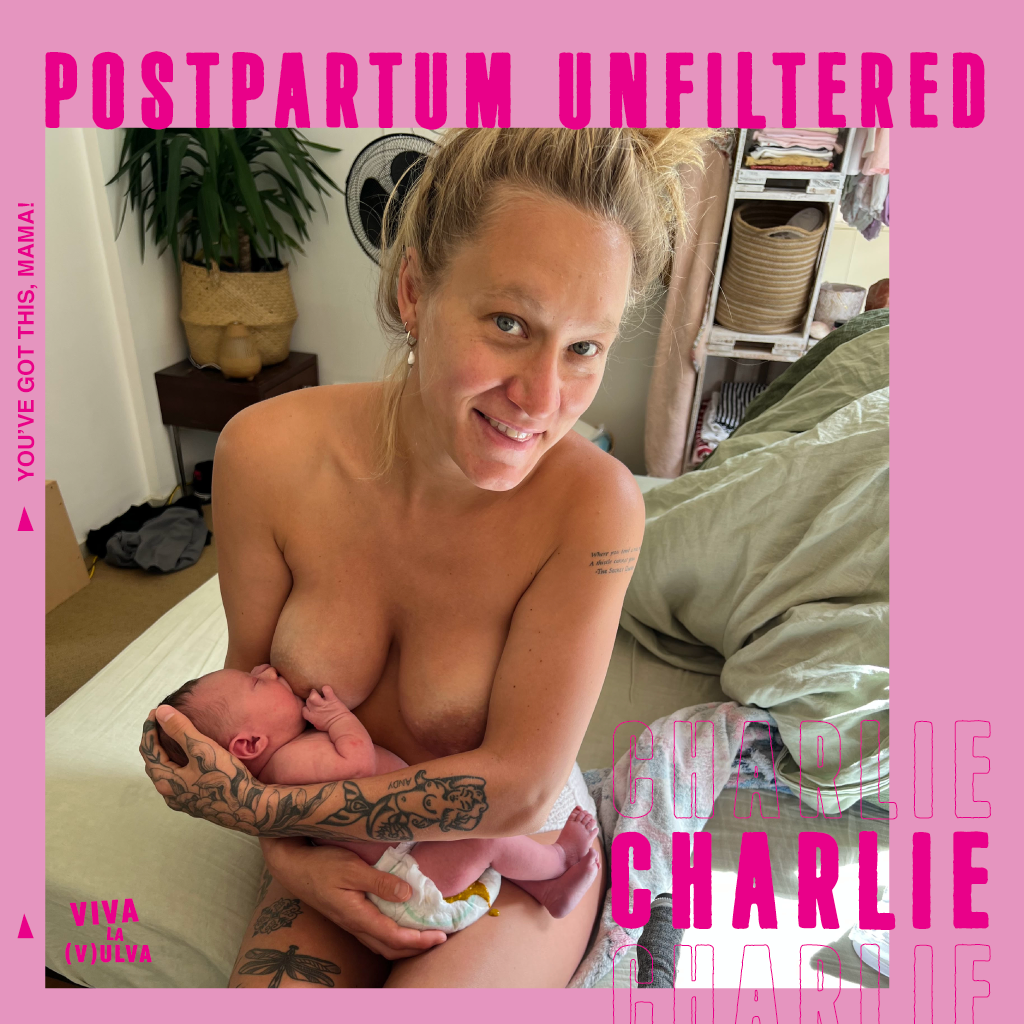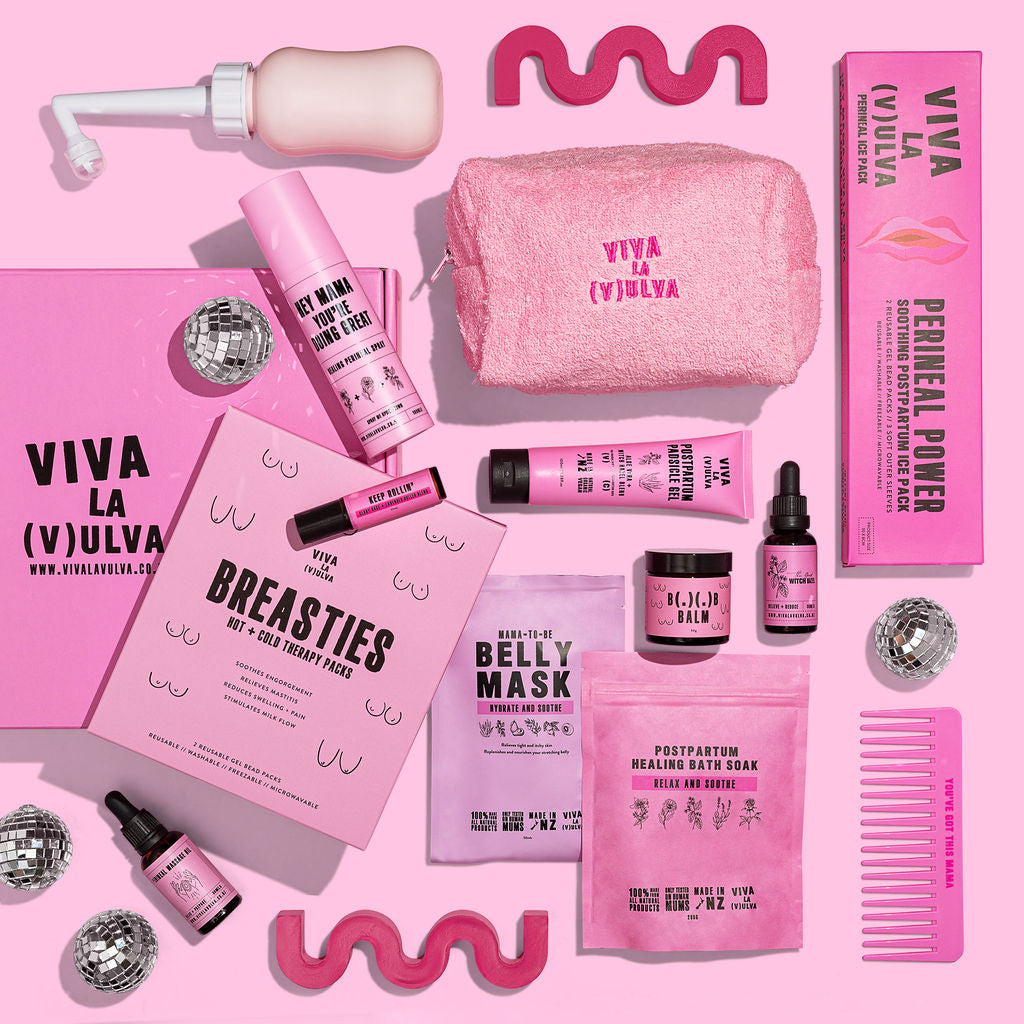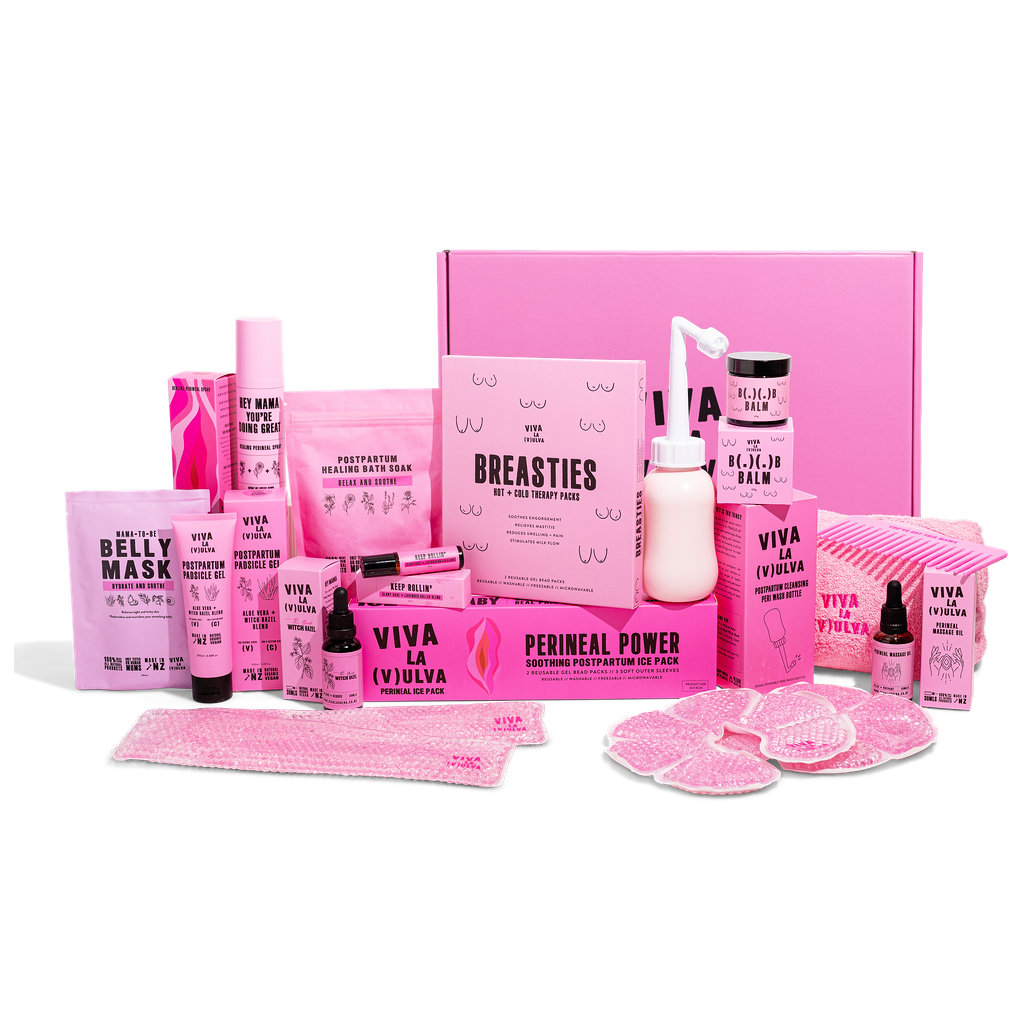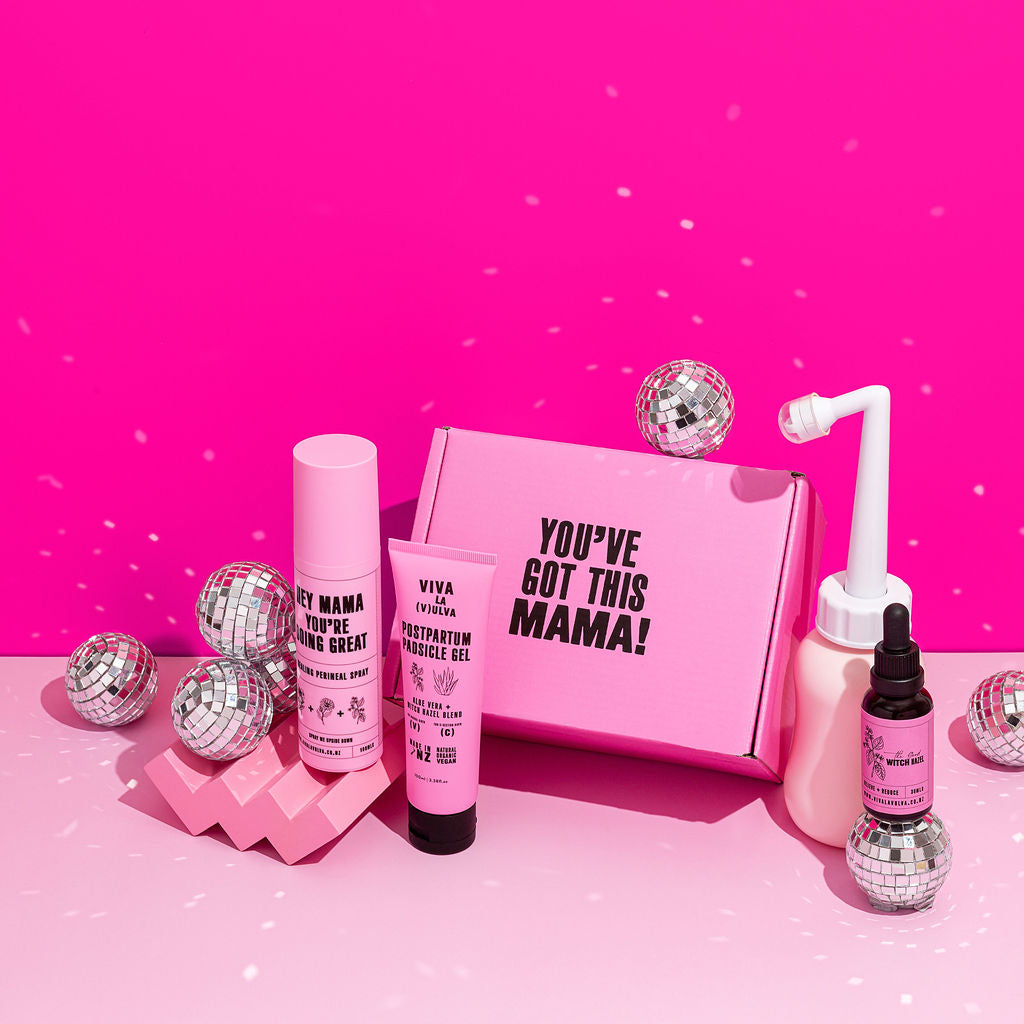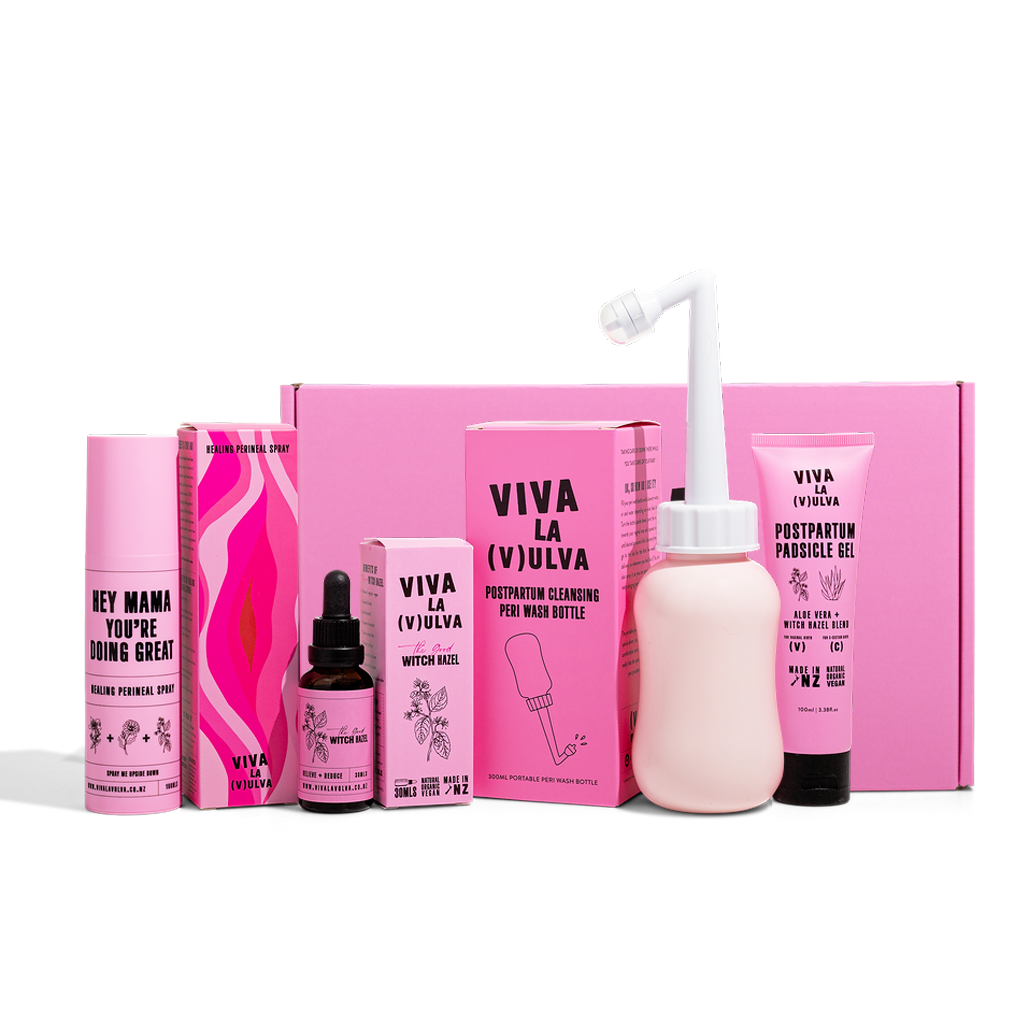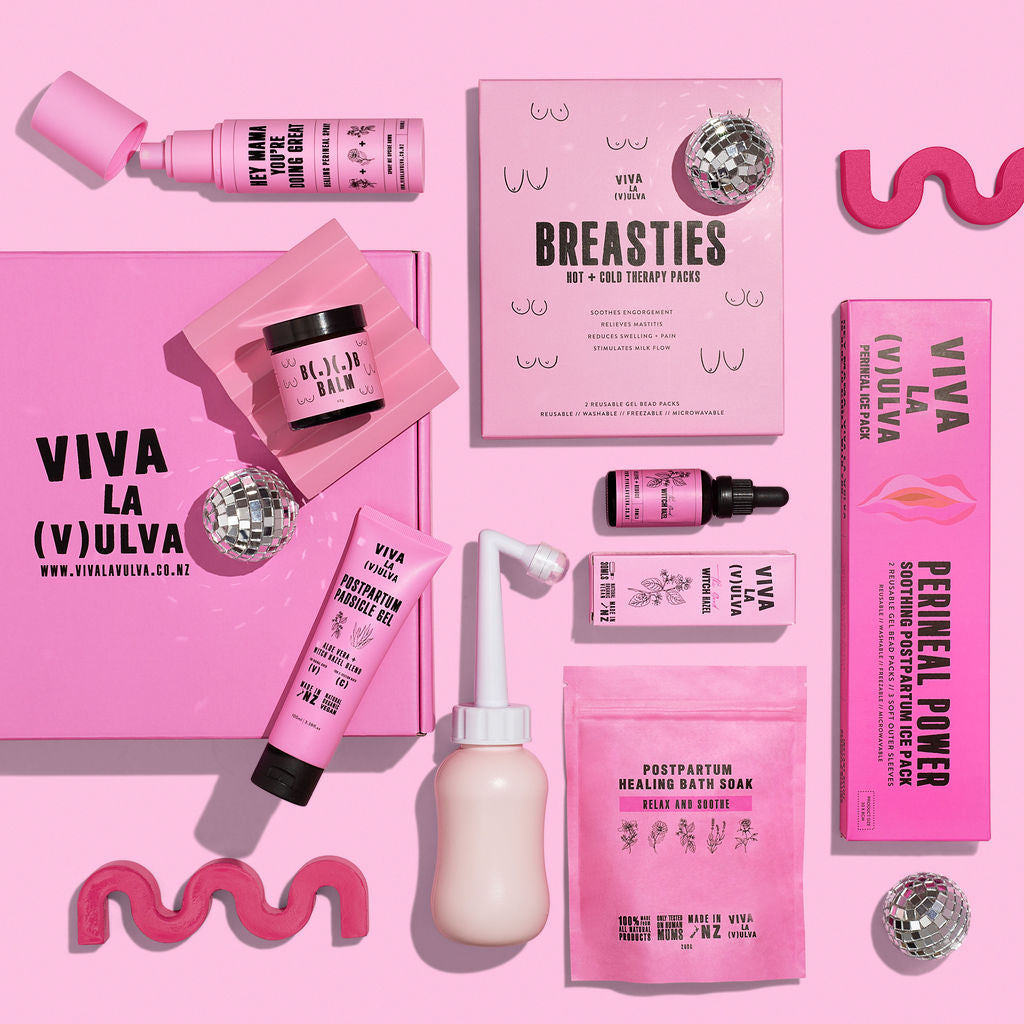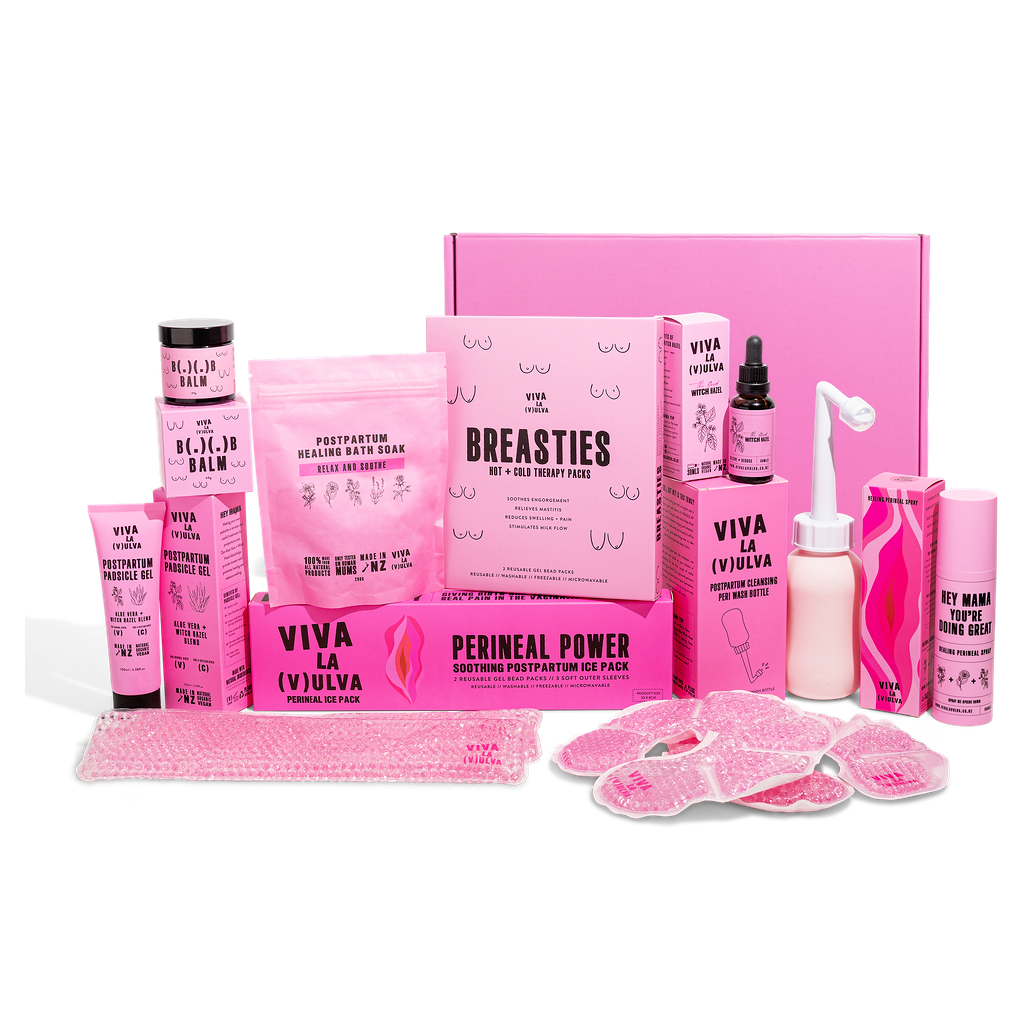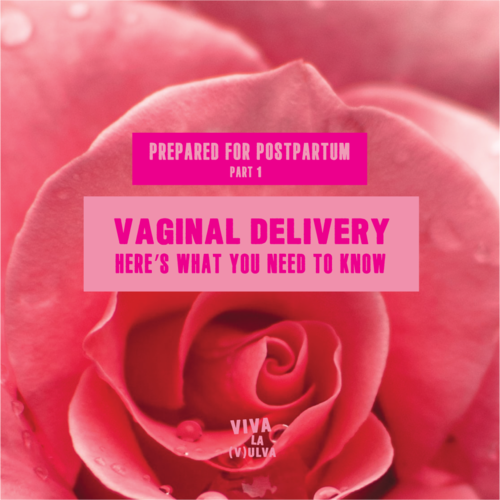
Vaginal Delivery; Here's What You Need To Know
Hey mama! Welcome to the very first part of our Viva La Vulva prepared for postpartum series!
Where we offer real talk about what to expect, tips and tricks to help you navigate changes and ways to prepare for all things postpartum!
Having a baby is exciting, yes, and it’s also a huge adjustment. And at Viva La Vulva we believe an educated mama is an empowered mama! Just as all pregnancies and births are completely unique, all postpartum journeys are too. How you deliver your baby will affect the way you heal and recover. We want to make sure you go into the fourth trimester (and beyond) as prepared as you can be knowing exactly what to expect from your body in the weeks and months after birth. While it’s totally necessary to educate yourself about pregnancy, labour and birth, preparing for postpartum is essential! You are giving your future self the best possible chance at healing comfortably and transitioning to motherhood gracefully. Empower yourself by doing your research and learning beforehand!
Your body changes a lot after you give birth, changes that are physical and some emotional. In Part 1 of our preparing for postpartum series, we are serving up some real talk about VAGINAL DELIVERY… We talk about what to expect, share tips and tricks to help you navigate these changes and offer ways to prepare for delivering your baby vaginally.
Can we just say thank you for being here. And now that you’re here let’s take a quick minute to recognise 👏🏼 you and your incredible 👏🏼 body! If you’re growing a baby(ies), if you’ve recently birthed, or if you're well into your postpartum recovery journey please acknowledge yourself, you are an incredible mama, honour what your body has achieved, honour your mind, and celebrate both, because at Viva La Vulva WE ARE!
*Disclaimer. Mamas, please know that this information is not intended to act as or replace any medical advice, if you have questions or you are concerned at any time ask your lead maternity carer (LMC).
BODY AFTER BABY AND WHAT TO EXPECT POSTPARTUM - AND WE’RE NOT TALKING ABOUT ‘BOUNCING BACK’
Let’s talk about some of the physical changes that you might experience in the weeks/months after giving birth, some ways to ease the discomfort and some postpartum essential items to have on hand to make it a little easier!
Your body is changing through pregnancy and birth. Growing a human, birthing that tiny human and healing… are all massive accomplishments! Mama, it is so important that you give yourself, and your miraculous body, the space and time to heal. And know it can take time to adjust to your body post-birth as things may look and feel a little different. Things may not go back to how they were before and that’s okay, please know it’s also okay to grieve your pre-baby body. It’s all about nurturing your mind and nourishing your body at this time. Be kind to yourself, mama, because giiiirrrl you got this!
VAGINAL DELIVERY - AN INCREDIBLE EXPERIENCE BUT ALSO A PAIN IN THE PERINEUM!
Recovering from stretched cervix and vagina, perineum soreness, grazes, tearing, episiotomy and/or assisted delivery.
The good news, the vulva/perineal area is full of blood vessels and has great blood supply so generally heals pretty quickly! We are designed to give birth after all! After a vaginal birth, your body and vagina have been through a lot, to say the least! Depending on how you birth, you may have perineum soreness, swelling in the area, feelings of heaviness due to stretching of the cervix and vagina. This soreness usually goes within 2-3 weeks. If you sustained tearing, had an assisted delivery (ventouse or forceps) and/or had an episiotomy (a surgical cut to enlarge the vaginal opening) you may have stinging and stitches added to the mix as well.
Know that pain from stitches tend to get worse before they get better as the swelling causes stitches to tighten. Sutures are designed to self-dissolve and all pain should be gone within 4-6 weeks. Make sure to get your stitches checked by your LMC as you are healing. And be prepared by knowing sometimes the discomfort can go on much longer due to scar tissue or how things have healed - if you have pain past this point it pays to see a pelvic floor physio and/or specialist about it, you definitely don’t need to just put up with it, get help! Once healed you can also try gentle perineal massage to help mobilise the tissues, perineal massage is good before birth and after! Do a bit of your own research and read our perineal massage guide here.
Some women heal super fast and some slower, make sure you listen to what your body needs, now is not the time to compare yourself to others, definitely know and respect your limits, mama. I.e. you don’t need to be up on your feet, entertaining guests or out walking straight away until it feels good for you to do so. Make sure you get as much support as you can, say yes to any help and ask for help around the home if you need it.
VAGINAL DELIVERY: TIPS & TRICKS
Ways to be prepared, alleviate pain and look after stitches if you have them:
-
Before birth - try perineal massage from 37 weeks onwards - here’s how.
-
As you get closer to your due date research other natural ways to induce labour and naturally strengthen your cervix and uterus. Keep moving when you can - walking along a curbside helps move baby down into your cervix, or sitting on an exercise ball each day. Some ideas you could look into; hypnobirthing, pregnancy massage, hand expressing colostrum, acupuncture, light stretching, pressure points, Medjool dates, evening primrose oil, raspberry leaf tea and other homoeopathic remedies! Ask your LMC if they have any specific recommendations around this or things you should avoid.
-
Use our magical Healing Perineal Spray straight on your perineum and as often as you like for instant soothing relief.
-
Often it’s too sore to wipe; a peri wash bottle will be your best friend, it helps keep everything clean (super important) and helps dilute your wees to avoid stinging, pop a few drops of the Viva La Vulva Hypercal healing tincture in or The Good Witch Hazel in warm water and use every time you pee for relief.
-
Use The Good Witch Hazel if you have haemorrhoids, spray straight on or use in the peri wash bottle.
-
Use our Perineal Power soothing ice therapy packs on your perineum to help with swelling and soreness, pop outside of your pad/underwear. You could wear a second pair of undies to keep in place.
-
Sit on a pillow(s) or if it’s uncomfy to sit spend your time lying down and resting in bed!
-
Use our healing bath salts and soak in a warm bath (not hot)! It’s recommended to wait for at least 24-48 hours after birth - a bath can cause swelling and infection. If you have self-dissolving stitches, soaking is not a good idea. Check with LMC if you are unsure.
-
If ok to wipe - lightly dab, or gently wipe from front to back after going to the bathroom.
-
Padsicles are super relieving and offer extra healing benefits - use your prepared frozen padsicles made with our padsicle gel! Find out more about how to make a padsicle here.
-
Ask your provider about pain medicine - it’s generally okay to take paracetamol.
-
Take stool softener to avoid constipation, use natural remedies and kiwi crush is a goodie to help with this too! Talk to your healthcare provider if you’re unsure.
MORE ABOUT TEARS, EPISIOTOMY AND LOOKING AFTER STITCHES
We’re here for the tears mama. Most first time births sustain some minor tears and grazing as your vagina stretches to make room for the baby's head to come through the vaginal opening. There are different degrees of tearing, minor tears often heal quickly on their own, but for 2nd, 3rd, 4th degree tears, stitches are needed to help with the healing process.
The different types of perineal tears are:
-
First-degree - small tears that only affect the skin, usually healing quickly and without treatment.
-
Second-degree - Tears that affect the muscle of the perineum and skin, usually require a few stitches.
-
Third-degree and fourth-degree tears are deeper and extend into the muscle that controls the anus, these types of tears will need repair in an operating theatre - with appropriate pain relief of course!
EPISIOTOMY
Episiotomy is a surgical cut made to the perineum to help with delivery, most commonly used - with your consent - when delivering with forceps/ventouse or baby’s shoulder is stuck behind your pelvic bone. And don’t worry you are given a local anaesthetic to numb the area so you don’t feel it. But it can prove to be more painful healing an episiotomy cut than natural tearing. Know your preferences, if you’re worried about this speak to your LMC ahead of your birth to create a plan.
Tips on how to look after your stitches:
-
Practice good hygiene - it’s important to keep the area clean to avoid infections - use a peri wash bottle, sitz baths, shower when you can, wiping always from front to back and wash hands regularly.
-
Use Viva La Vulva Hypercal spray, instant soothing relief and also helps keep things clean.
-
Use our Perineal Power cold therapy packs to help with swelling.
-
Getting some fresh air down there can help aid the healing process, lie down without undies on for 10 mins once or twice a day.
-
Don’t strain to poo, if you are constipated try stool softeners or other natural remedies (you could try kiwi crush, prunes, healthy fibrous diet).
-
It’s recommended to avoid sex until at least 6 weeks postpartum.
-
Avoid strenuous activities and get lots of rest.
YOUR UTERUS TAKES ABOUT SIX WEEKS TO RETURN TO PRE-PREGNANCY SIZE
Within minutes of giving birth, your uterus (which grew to the size of a large watermelon in just 40 weeks) just wow, is already starting the process of contracting back down to its pre-pregnancy size and your organs are returning to their original places, all of this taking only 6 to 8 weeks. Not surprisingly, this process can cause cramping pains in your lower belly (called afterpains).
Hormones released if breastfeeding, can help the contracting process along but can also cause more cramping. These can be dull or sharp pains. The good news afterpains usually only last up to a week for most women. They can go unnoticed by some and be really sore for others. Take paracetamol for this if you need to.
WE BLEED AFTER BIRTH FOR UP TO 6 WEEKS… THIS IS CALLED LOCHIA!
Following birth, it's normal to bleed as the wall of your uterus heals (there are open blood vessels where your placenta came away). You are healing a massive wound inside your uterus, it is so important to avoid being too energetic and instead just REST, mama, rest as much as you can! Lochia is a mixture of blood, tissues and the lining of the uterus coming away.
-
The bleeding is bright red (called rubra, lasting 2-5 days) and like a very heavy period at first.
-
You may need to change a maternity pad every few hours for the first 24-48 hours.
-
Some women get blood clots - no larger than a plum is normal, but always best to check with your LMC as large clots can be cause for concern.
-
Gradually the bleeding will lessen and become a pinky, rusty red or brownish colour (called serosa, lasting 5-10 days), and eventually turn white, yellowish or clear (called alba) until it stops.
Use comfortable pads, your peri wash bottle, shower, and change pads regularly to keep it clean down there. It’s best to avoid tampons, menstrual cups or inserting anything inside the vagina - this helps to avoid infection and vaginal tissues can feel sensitive as they are healing. If you start gushing blood in the days and weeks following birth (ie. filling 1-2 pads in 30-60mins or more) this is serious, call the emergency and your LMC. It could be a secondary haemorrhage, not super common, but pays to know what to look out for. Losing blood during birth and afterwards can make you extremely tired, so take it easy and be kind to yourself!
YOUR FIRST POO AFTER DELIVERY
That DREADED first poo after you’ve given birth… probably one of the most anticipated poos you’ll do in your life?! And the question from midwives and nurses that many mamas hear many times in the first 24-48 hours after childbirth “have you peed, have you had your first bowel motion yet?” We wanted to know a little bit more about doing your first poo, what to expect and how we can make it a little less of a worry for you, mama! so we interviewed Stacey (midwife) about this - read what she had to recommend here.
SEX AFTER VAGINAL DELIVERY
We interviewed Morgan Penn - Somatic Sexologist on ways to reconnect with your body after birth. If you want the down-low on sex after birth with things like... When “should” I be ready to have sex again? What will it feel like? I’m a bit scared, will it hurt? What positions might be best to start? Where did my libido go? How do I connect with my partner in the midst of everything that is already going on? Then definitely check out this interview.
Postpartum healing can be a big adjustment mama. Having this info up your sleeve is especially important when you might be functioning on little to no sleep, caring for your newborn, leaking here and there and everywhere, managing pain and healing. We get it! Remember our pregnant/postpartum bodies are working hard for us, doing an incredibly important job and deserve to be celebrated, tiger stripes, wiggly bits and all! At the end of the day, it’s about celebrating the wins, acknowledging the unpredictable nature of childbirth, acknowledging what comes after and celebrating our bodies and our unique journeys to motherhood. These experiences are ours.
We are so glad you’re here because being aware of and prepared for what happens postpartum can seriously help alleviate feelings of overwhelm, stress, anxiety and empower you with the tools/knowledge to care for yourself. MAMA, you have got whatever postpartum throws your way.
Next up in Viva La Vulva’s preparing for postpartum series, we’ll be putting a spotlight on C-section delivery and how to recover from major abdominal surgery. Stay tuned.
xx VLV
*Checkups with your LMC are super important. Many discomforts and body changes are normal but new mums can be at risk of serious health complications in the days and weeks after birth. If anything doesn’t feel quite right, always, always ask. There are no stupid questions when it comes to your health.
SOURCES:
-
Real mamas sharing real postpartum experiences.
-
Fray, Kathy. Oh Baby, A NZ guide, Birth, Babies, Motherhood uncensored, 2016.
-
Schiedel, Bonnie. “17 mind-blowing ways your body changes after giving birth.” Today's Parent. May 9, 2018.
-
De Bellefonds, Colleen. “Postpartum Recovery Timeline.” What to expect. Medically Reviewed by Mark Payson, M.D. March 10, 2021.


